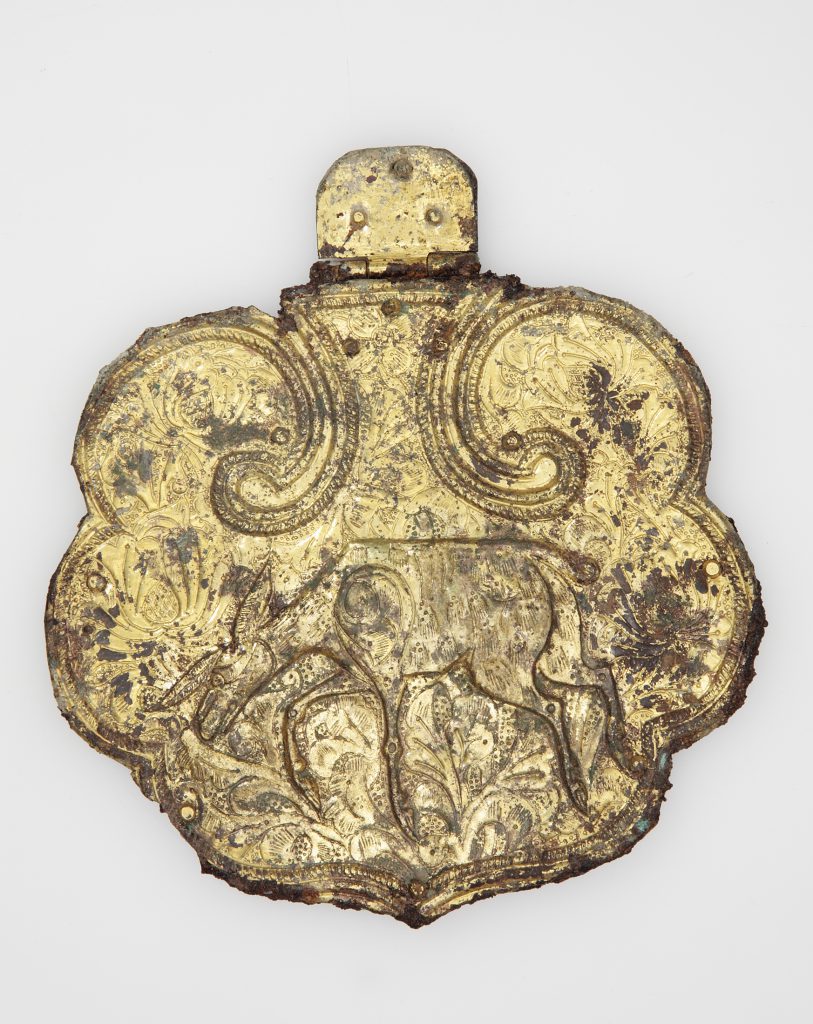



Title: Plaques from a Set of Horse Trappings
Date: 14th century AD
Location: Iran
Materials: cast and sheet copper alloy, worked in repoussé, chased, punched, engraved and gilded
Dimensions: 15.5 x 14.4cm (hinged plaques); 11 x 26cm (elongated plaques)
Accession Number: JLY 503
Other Notes:
The four plaques, of sheet worked in repoussé, chased, punched and engraved, are unusual in that the sheet is copper alloy. All but one are currently attached by rivets to heavier, cast bases. The rounded and lobed plaques, which are hinged at the top, are decorated with a long-eared deer grazing on a ground of lotus flowers. The elongated plaques have lobed ends and oval centres with two slots, one retaining a large rivet. Each bears two deer with mushroom-shaped (lingzhi) antlers, couchant with their heads turned back, on a foliate ground within framed medallions; the remaining areas are decorated with foliate scrolls and lotuses. All have double borders with beading and rivets.
The function of these plaques is unclear. It has been suggested that the elongated plaques may have been attached to a saddle to secure the stirrups, while the rounded plaques could have decorated belt pouches. They have also been attributed to 13th- or 14th-century Anatolia or the Golden Horde (south Russia or Central Asia).
The set also includes what may be a plume holder and a group of 143 small plaques which were probably used as fittings on saddle and bridle straps.
Bibliography:
D. Alexander, The Arts of War. Arms and Armour of the 7th to 19th Centuries, The Nasser D. Khalili Collection of Islamic Art, volume XXI, London 1992, cat.16, pp.52–7.
M. Spink & J. Ogden, The Art of Adornment, Jewellery of the Islamic Lands, The Nasser D. Khalili Collection of Islamic Art, volume XVII, London 2013, cat.306, pp.402–3.
J.M. Rogers, The Arts of Islam. Masterpieces from the Khalili Collection, London 2010, cat.220, p.185.
Zoom
Close

Create your own collection of artworks that you can print or save as a PDF. Please enter you email to enable feature.
Small Flask | JLY 1075
Has been added to your collection.
TIP:
You can now access and view your collection from the main menu at any time.